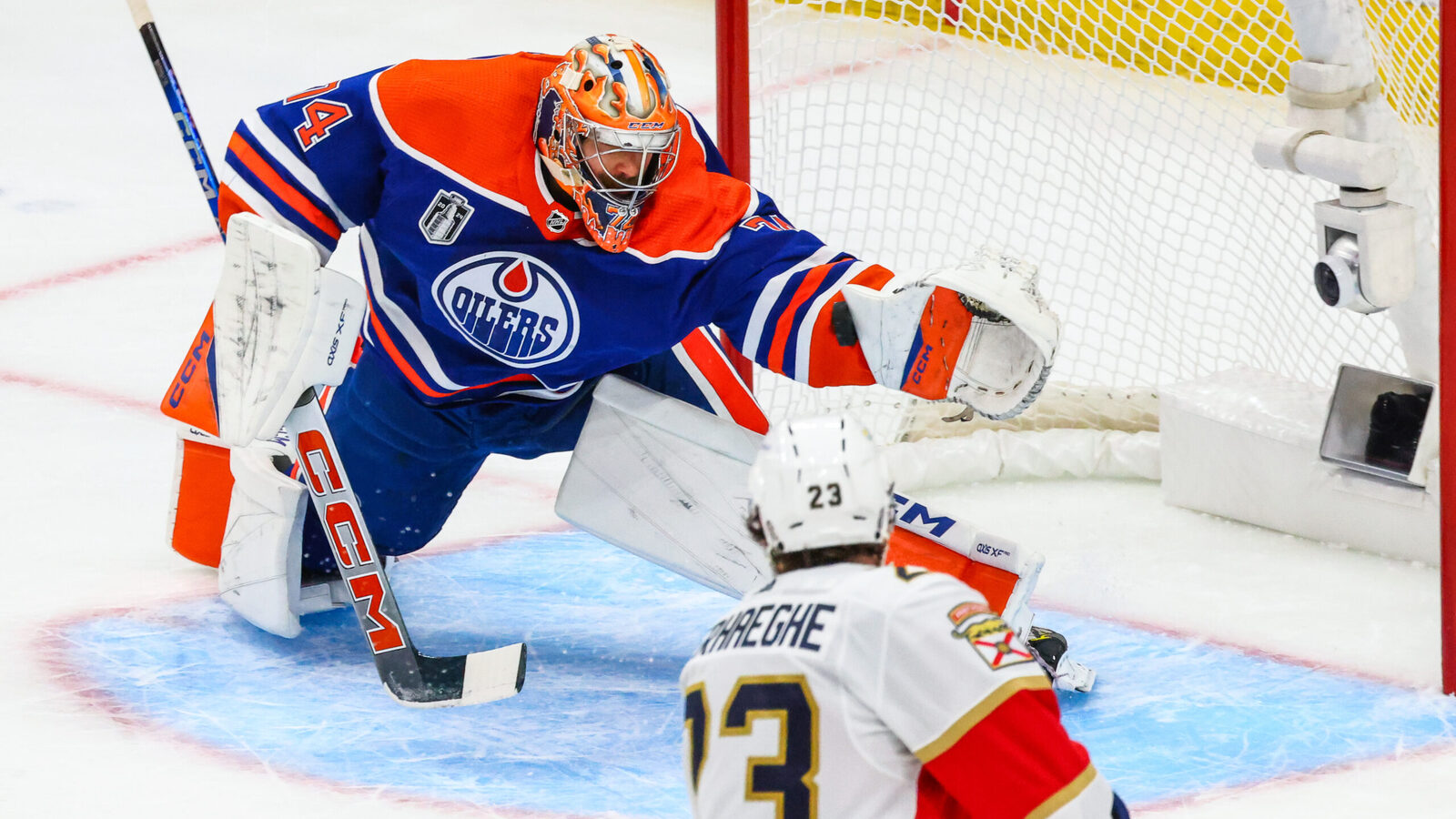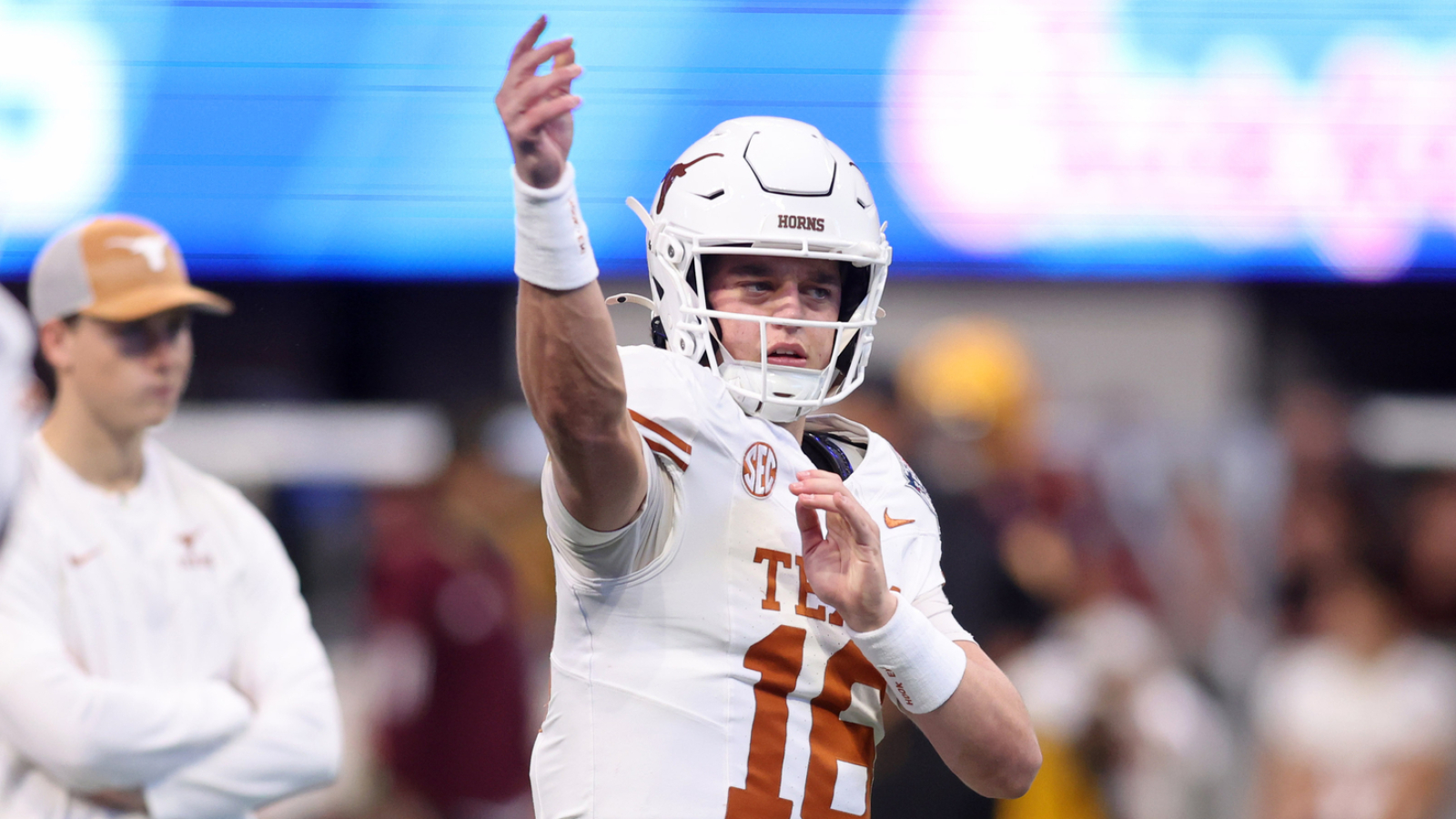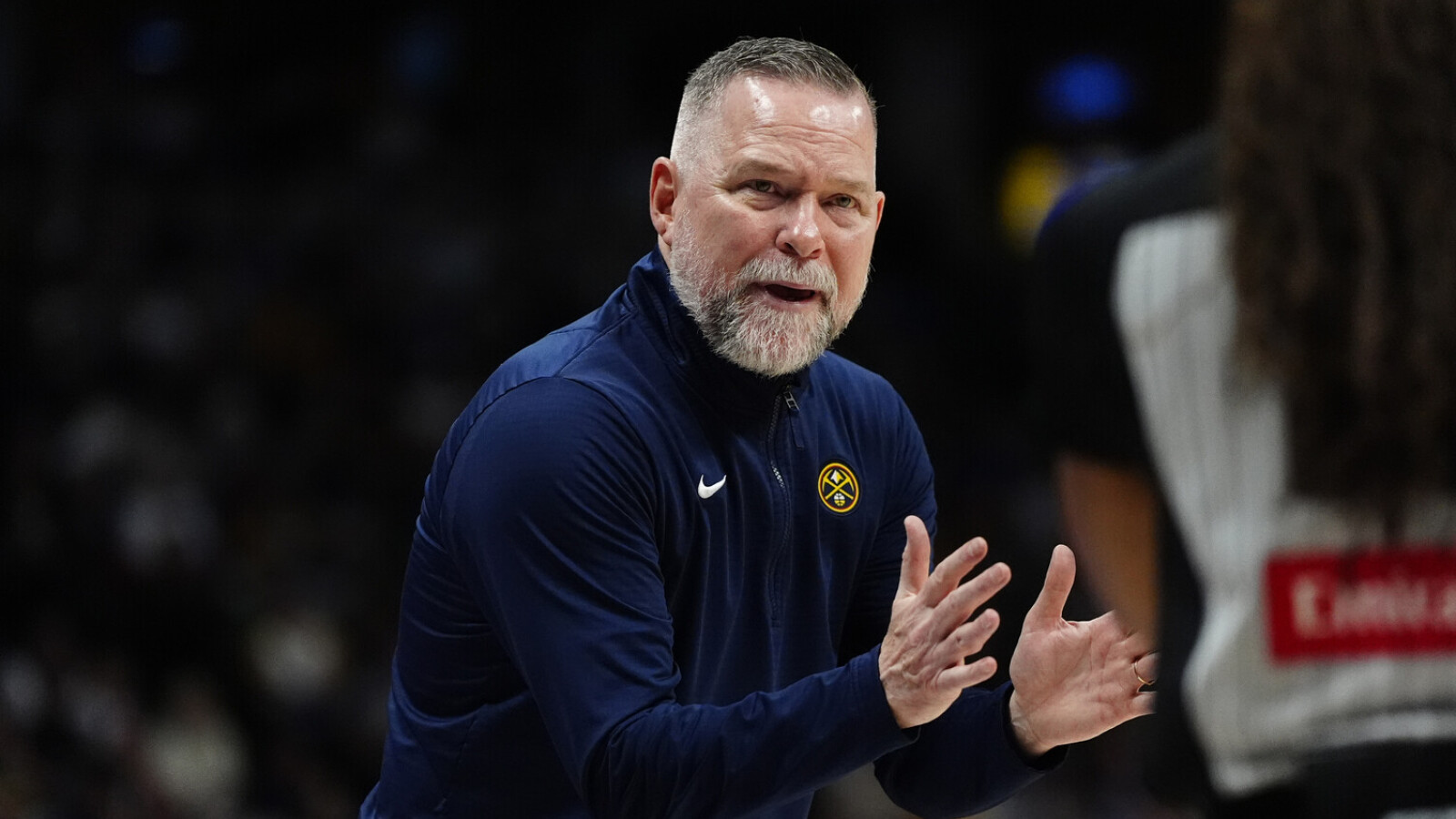
We talk often about goalies needing to be good, and it is true, but I think we often overlook the shooter’s responsibility to make a good shot. Teams spend a lot of time in pre-scout looking for ways to exploit the opposing goalie. It can be vital, but it is up to the players to try and shoot to an area where a goalie might be weaker.
With that in mind, I spoke with Kevin Woodley from In Goal Magazine and NHL.com to get his thoughts on where the Oilers and Panthers might shoot on Sergei Bobrovsky and Stuart Skinner in the Stanley Cup Final.
Jason Gregor: Is the scouting report still to avoid shots on the ice on Bobrovsky? Do you need to get it high to score?
Kevin Woodley: To a certain degree. There’s one part of that, which I think can get a little overstated in the playoffs. It gets presented as a weakness. Shoot high just under the bar, and that’s your best chance. With him, it’s more about not playing into his strengths down low. And I do think the Oilers generated chances last year, in the first three games, but when they got in tight, they tried to beat him along the ice way too often. And every once in a while, you’re going to open them up five-hole for sure. We see that in the numbers. Goals during the regular season, 11 through the five-hole and five so far in the playoffs. But the reality is most of those are tips, deflections or scrambles, and he has to lift a leg to push back and forth.
And then the second part of that, one of the reasons you don’t see so many goals up over the blocker or up over the glove are because even when he’s moving east west, most goalies, you get them extended east west, side to side slot line plays and if you get the puck above the pad, 12 inches off the ice, you have a really good chance to score it. But because Bobrovsky has so much good coverage just above the pads. He always builds what Ian Clark would call, from their time in Columbus together, hand in support.
So, the hand is always there over top of the pad. You saw that in the Stankoven backdoor save in the last round. That was a chance to be a momentum-changing goal for Carolina with a backdoor one-timer. On 99 of 100 goalies, that’s in just over the pad, but Bob extends, drops the stick, which he’s willing to do to keep the blocker square in moments like that and makes an incredible blocker save.
Those chances have to be in the top half of the net, and even twelve inches off the ice with Bob isn’t enough. What you do in those moments is you give him the chance to change the momentum with his spectacular athleticism. You have to put it up high. I know it’s easy to say from my couch and a lot harder to do in real time with the pressure the Panthers put on you defensively, but it’s so important because they can become defining moments in a series.
Gregor: Okay, so what about, like, situational stuff like off the rush, down low off cycles. Are there other areas he’s a little bit more susceptible?
Woodley: Well, let’s start with down low off cycles. I do think low-high pop passes can work. He’s such a good skater. So anytime he can gain ice, he’s not aggressive by any means, but there are times he gets up above his crease. And so as good as he is in and around the posts, anytime you can move it sort of low to high below the goal line, you’re limiting his ability to gain depth. At times, he comes out at you and gives up the short side because he’s coming off his post. Other times, and this is something you have to be aware of, both off the rush and down low.
He has one of the more active sticks in the NHL, maybe this side of Pyotr Kochetkov. Anything below the goal line on the blocker side, you can get Bob at times with that paddle down and reaching out at you. So you have to be cognizant. If you’re not aware of it and you just try and make that pass off across the ice, he’s going to break it up.
But if you are aware of it and you can get that little sauce pass over top of the stick, then the guy catching it on the other end will have time. As soon as a goalie reaches one direction with a blocker, you’re late to the other side. It delays your ability to get back over to the glove side. That being said, once he activates, he’s the best in the league, in my opinion, at knowing when to drop the stick and just use the blocker. But once he activates the poke check, he’s kind of all committed and that blocker is out of the way. So, you can look for moments like that.
One more thing I’d add is mid-high looks off the rush on Bob. You think the further out is less dangerous. With Bob from a tracking standpoint, the way he tracks and the way he can get caught in sort of an elevated stance when the play is around the top of the circles, you’re almost better to shoot from the top of the circles to that sort of top hash mark above the face off than you are to get closer to the net. Especially if you’re in a shooting situation versus a passing situation. Those are the ones that seem to give him the most trouble. A high blocker as opposed to high glove, there’s been, you know, back and forth over the last number of years, a number of different narratives around his glove versus his blocker.
But right now, in the playoffs, his high blocker save percentage is .813 and his glove is .811, which is actually above the average in the NHL. He’s only given up one goal all playoffs, just over the pads. But if you go off the hips or up high from higher in the zone, that’s where that sort of stance transition for him, or the sort of tendency to have his head up and not track down and into pucks, can cost him on long-distance shots.
Gregor: You’ve outlined a few times on my show about how off the rush can be an area where Stuart Skinner can be susceptible to giving up a goal. However, that hasn’t been the case in the last two series against Dallas and Vegas. They only scored a combined five goals off the rush. I know Edmonton limited the chances, but Skinner still made some key saves. What adjustments have you seen from Skinner that has helped him off the rush?
Woodley: He has made some, in my opinion, they’re not huge. They’re not dramatic. They’re subtle, but I just see a little less out early and backwards flow in his game off the rush. He’s not getting caught well outside of his crease.
And a part of that is the Oilers because you are right, they’re not giving up a lot off the rush, and very little of it is high danger. It’s straight lines. The defencemen are pressuring at the right points. They’re not allowing it to get in tight, and they are not allowing east-west looks. Off the rush, I think they’ve only allowed one east-west high danger chance since Game 4 against Vegas. Those are the cross-slot line plays off the rush. That’s a combination of not turning pucks over in areas that give up odd-man rushes. And when you do, back pressure is a must. And the way the defencemen are playing rush chances right now is in sync with their goaltender. They are really dialled in.
Now, the caveat, Dallas and Vegas were exceptional rush teams. I know Florida is a dump and chase team, and where they get you is intercepting breakout passes, forcing turnovers with pressure in zone or just around the blue lines, quick regroups from just outside of the blue lines. Even in zone, when they force a turnover, they come at you downhill in a way that’s almost like, even though it’s in zone, it’s like a rush chance the way they create it. And so that’s an area, being able to get out of your own zone cleanly against the Florida Panthers is not easy to do, but it’s going to be important because they’re not going to create rush chances breaking out of their own end coming up the ice. That’s not how they do things.
It’s going to be on forcing you into mistakes either in your own zone, coming out of your own zone, or even early in the neutral zone and then attacking quickly after that. So it’s almost then that even though we would consider it an in-zone chance, it’s almost like a rush chance. And we (In Goal Magazine) and Clear Site Analytics have labels for that. They are transition rush chances, which are quick turnovers that turn into rush chances. But sometimes when it’s inside the zone, it doesn’t get labelled that way. It’s usually quick regroups, which is one of the toughest places for a goalie because you don’t really have time to set. When you turn a puck over at the blue line, as a goalie, you have to quickly grab ice and sort of resettle yourself, but your defencemen usually sag back.
So, it’s one of the worst things in the world as a goalie. Those quick regroups, the Panthers are as good as anybody just outside the blue line and bang right at you. They come with speed. Now your defencemen are sitting back. Their gap isn’t good. The back pressure is not there. And it’s a really uncomfortable situation as a goaltender because it’s not like a traditional rush where your defencemen are up above the blue line and gapped up. It’s a lot harder to read. The threat of a shot through your defenceman is much greater there, and so you tend to take more ice. And then if they create laterals, obviously, you have to recover that space. And when we talk about strengths and relative weaknesses, that is not something I would list on the strength side for Stuart Skinner. Preventing that is going to be really important for Edmonton.
Gregor: Since Game 4 against Vegas, Skinner hasn’t given up much. He’s looked very strong. However, you talked about off the hip or maybe the high blocker for Bobrovsky as places to shoot. Is there anywhere you’d expect the Panthers to shoot on Skinner?
Woodley: That’s a good question. I will say the one type of chance that can still sort of plague him statistically is breakaways. Okay. So far, he’s allowed four goals on eight in the playoffs. And, hey, 50% doesn’t sound bad, but the average is around 33% that go in. We’ve seen them take a quick shot low over the glove.
In terms of his overall and where to shoot on him, I would be staying away from the blocker if I were the Florida Panthers. High blocker, his numbers are just fine. High glove, and so much of this is situational, but high glove is at .860Sv% which is above the league average. I know people will find that hard to believe, but that’s where the majority of strong chances go.
When Stu’s moving or when you get him in a screen, and you put him in a blocking position where he has to slide across with his hands across, just trying to take up space or shifting off of a screen. The glove goes down, and that opens up access there. So, it’ll be interesting to see whether they go after it.
In terms of, have teams been targeting it? Not by the numbers. He’s seen 31 shots high glove and 33 high blocker, and so far 23 shots low glove and 16 low blocker. So overall, glove side, high and low combined, you’ve got 54 chances, versus 49 on the blocker side. Not a huge discrepancy. Not enough for me to sit there and think teams are really going after his glove right now.
I actually think he’s done a really nice job of sort of keeping it up, not dropping it as early as he might have in the past. And he’s made some nice clean glove saves. On open looks, he’s not defaulting into that block. He’s keeping that glove up high, and he’s controlling play by killing those ones that he can see with clean catches.
Gregor: So, you’re saying he’s kept his glove hand a little bit higher than normal?
Woodley: I don’t mean that higher relative to his past. He’s always been a fingers-up guy. I just mean he’s holding it there. He’s not dropping early and putting it into a down on his hip in a block situation, which tells me he’s seen the release. He’s trusting his stance, his posture, and he’s trusting that not going early, which to me is before the puck is off the blade, not allowing yourself the time to read the release, and just trying to block. And that is when you see the hands come down prematurely.
He’s done a nice job of staying patient overall. And I think if people are looking for signs of that, it manifests itself in that glove just basically holding in place on high shots, not dropping early and then having to come back up.

